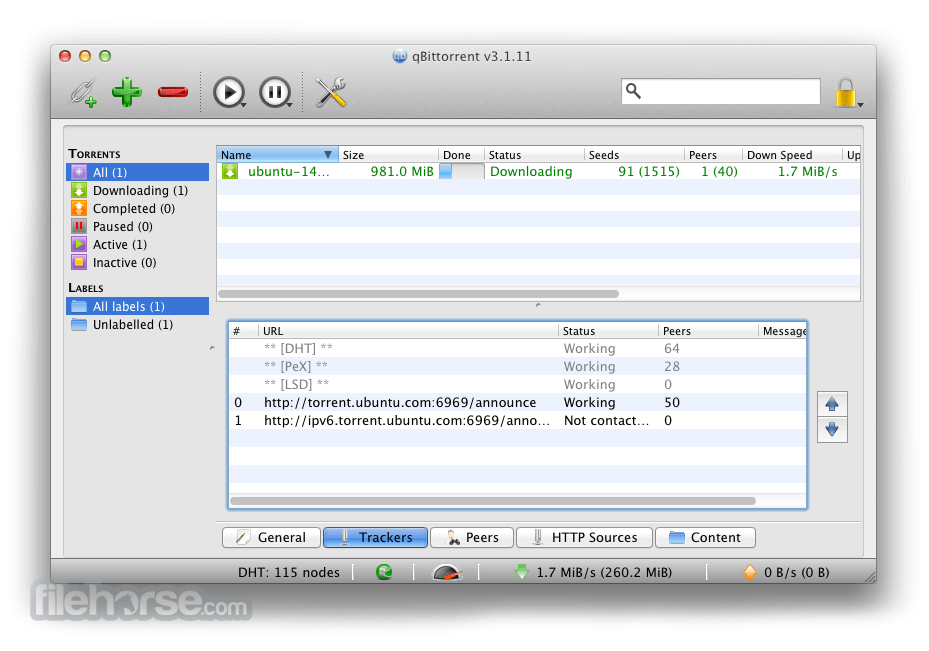

Regarding the transition to web components You get the artifacts I posted in the beginning of the thread.
#Qbittorrent themes windows
I think it’s okay to ship a default theme for Windows users, but currently they don’t get a working theme.
#Qbittorrent themes mac
The userbase consists of Mac and Windows usersĪs far as I know, MacOS applies a uniform look across all applications without developers having to do anything.

So virtually all GNU/Linux desktops follow some theme.
#Qbittorrent themes install
Additionally, GTK requires you to install at least one theme (it depends on adwaita). Though I doubt it will truly have a consistent look considering that some major parts of the UI has been translated to webview.īut I got a hunch that such cases are the minorityĮvery popular GNU/Linux distro comes with its own brand/theme. We could for example let Linux users choose whether they want their GTK/Qt theme or the native Anki theme. There should be a move in the opposite direction, really. For example, most Electron-based apps are unusable on systems with less than 64GiB of RAM and tend to be noticeably slower than native GTK and Qt apps.ĭon’t kill it. Whenever people try to use the web stack to make desktop apps, it leads to terrible outcomes. Web technologies exist to work in browsers. On a side note, Anki is not a web application (and shouldn’t be turned into one). E.g, if I open Thunar and Anki side by side, they will look like apps from two different operating systems, which is not pretty. Then it won’t look consistent with the rest of the system. But most GNU/Linux distros come with a set theme (Ubuntu tends to paint windows in orange and gray colors, for example).Īs someone who works on web applications most of the time, I’m used to having a single design for all platforms. In this case some default styles could be applied to Anki on Windows, as long as it is safe. I’m guessing Windows doesn’t have a way for the user to change how windows look. Some GTK themes copy macOS, but many do not. What is actually important is for Anki to style itself according to the set system theme. Maybe some people prefer Windows 2000’s look. It’s really a question of taste rather than anything else. If only a third of the userbase (macOS) has a good native theme and all the other ones look like Windows 2000 The solution is to improve the default theme so that it doesn’t cause breakage. However, I expect that most users use the defaults, and then they would run into the problem with unusable add-ons I mentioned before. Rather all users would benefit from an option to respect their system settings or at least an option to disable custom stylesheets. Instead of reverting the stylesheets (which are months worth of work), I suggest we add a command for add-on developers to disable the custom stylesheets on their windows if they desire. Also, it doesn’t appear to be polished and consistent. The new forced theme Anki ships with is rather controversial, some users I talked to dislike it. Maybe it is wise to check if the user has no theme set up, and only then inject custom stylesheets. Qbittorrent is an example of a Qt6 program that honors system settings despite having some custom widgets. If the user has applied a GTK or Qt theme, I would assume that they wouldn’t like Anki to ignore it. It appears that applying custom CSS to widgets can’t guarantee to fix them, like with the Qtablewidget example I posted.Ģ.1.55 uses custom Qt stylesheets to improve the look of the Fusion theme on Windows and Linux systems. Probably my biggest concern is that if I release an add-on with any Qwidgets in it, they might be unusable on other systems even if they use default stylesheets.


 0 kommentar(er)
0 kommentar(er)
